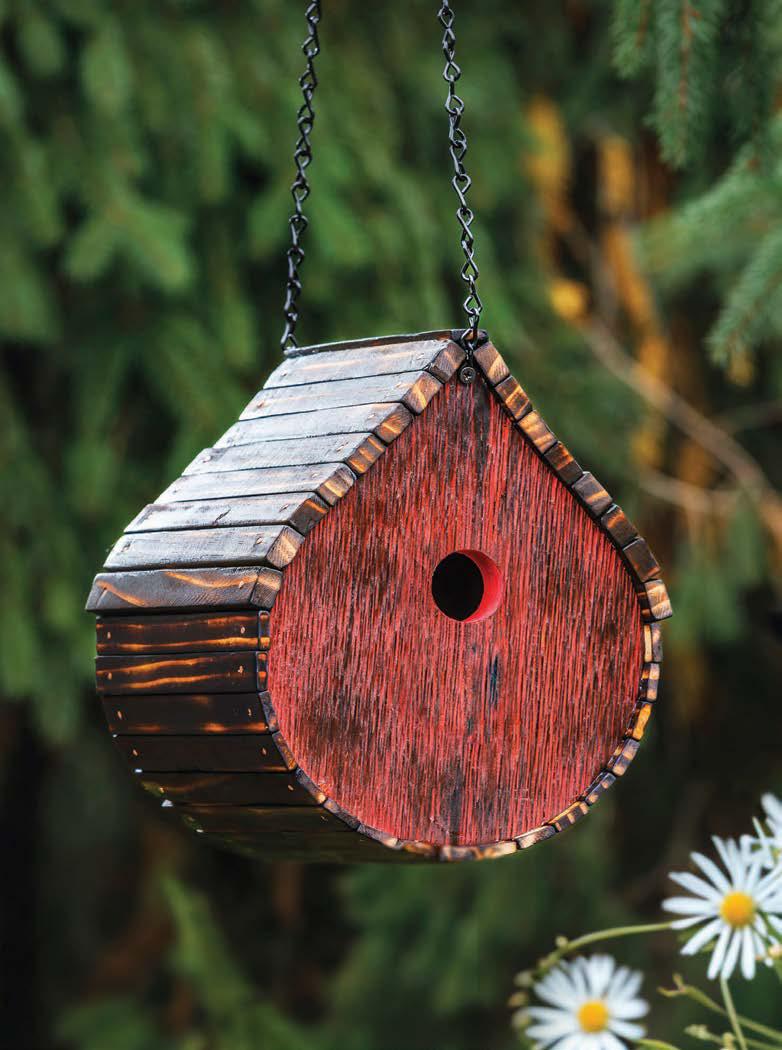Rustic diy Birdhouse

Step 1: Create a template like the one on the next page. Then transfer it onto wood face pieces (A) by tracing over carbon paper, or simply cutting out the template and outlining it with a marker.
Pro tip: Templates don't have to be complicated; there's no need for a fancy computer illustration application. You'll be amazed how easy it can be by using the line and shape tools in Microsoft Word.
Step 2: Cut out the exact same shape for the front and back faces (A), use a small dab of hot glue or double-sided tape to secure the two pieces of wood together. Then cut them as one.
Using a jigsaw or band saw, cut out the silhouette you've drawn on your wood. Any adhesive residue left behind can be sanded back later.
Pro tip: For a more accurate shape, cut on the outside of the line, then clean up to the line using a sander with 150-grit sandpaper.
Step 3: For this box suited for house wrens, place the entrance hole 4 in up from the bottom of the face.
Using a drill with a 1-in. Forstner or spade bit, drill through the front face (A) of the birdhouse. I used a drill press. If you use a drill, be sure to clamp down the wood so it isn't moving around when you're drilling.
Pro tip: For a clean hole and to avoid blowout from the back side, place a sacrificial piece of wood under the wood you're a drilling through.
Step 4: Make cuts for roof pieces (B) and body pieces (C) to go around the sides and base. (Refer to the cutting list, or adjust according to your design.) These pieces will connect to your front and back faces (A) to create the shape.
This story is from the {{IssueName}} edition of {{MagazineName}}.
Start your 7-day Magzter GOLD free trial to access thousands of curated premium stories, and 9,500+ magazines and newspapers.
Already a subscriber ? Sign In
This story is from the {{IssueName}} edition of {{MagazineName}}.
Start your 7-day Magzter GOLD free trial to access thousands of curated premium stories, and 9,500+ magazines and newspapers.
Already a subscriber? Sign In
Tracking Tiny Travelers
Small, numbered rings reveal the secrets of hummingbird migration

The Dirt on Millicompost
Learn how to use millipedes to increase soil health

THE PERFECT PAIRING
Learn the best ways to use an abundance of blooms to attract more birds and beautify your feeder space

ULTIMATE GUIDE TO Hummingbirds
Enjoy the whirr of tiny wings when you create a space that these majestic fliers want to return to again and again

Ask the Experts
The pros share their knowledge and answer reader questions

DOING IMPORTANT WORK
Readers share photos and show appreciation for tiny pollinator powerhouses that play a huge role in supporting biodiversity and keeping ecosystems healthy

Nutrient Knowledge
Get the scoop on how fertilizers boost your soil

Pollinator Magnet
Create a hummingbird hot spot with this interesting flower

The Hotter, the Better
Try these heat-tolerant picks that hummingbirds love

Going the Distance
The tiny rufous hummingbird has a tendency to travel far and wide
